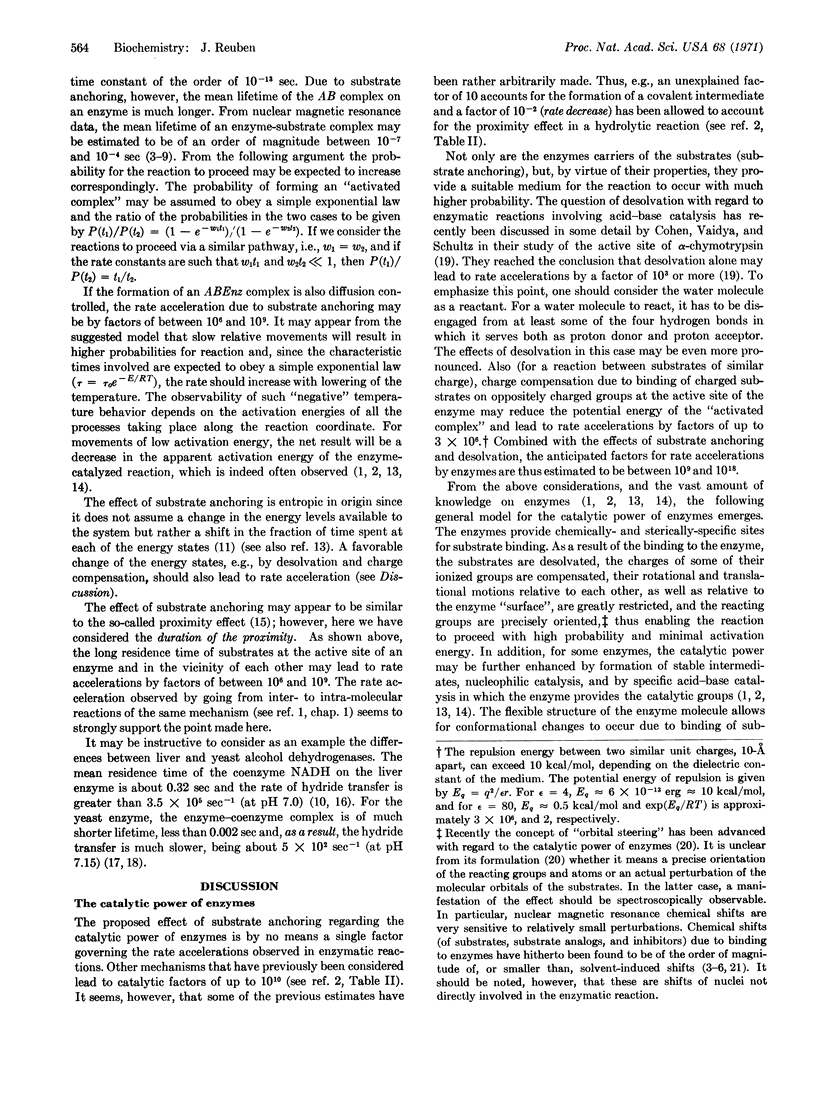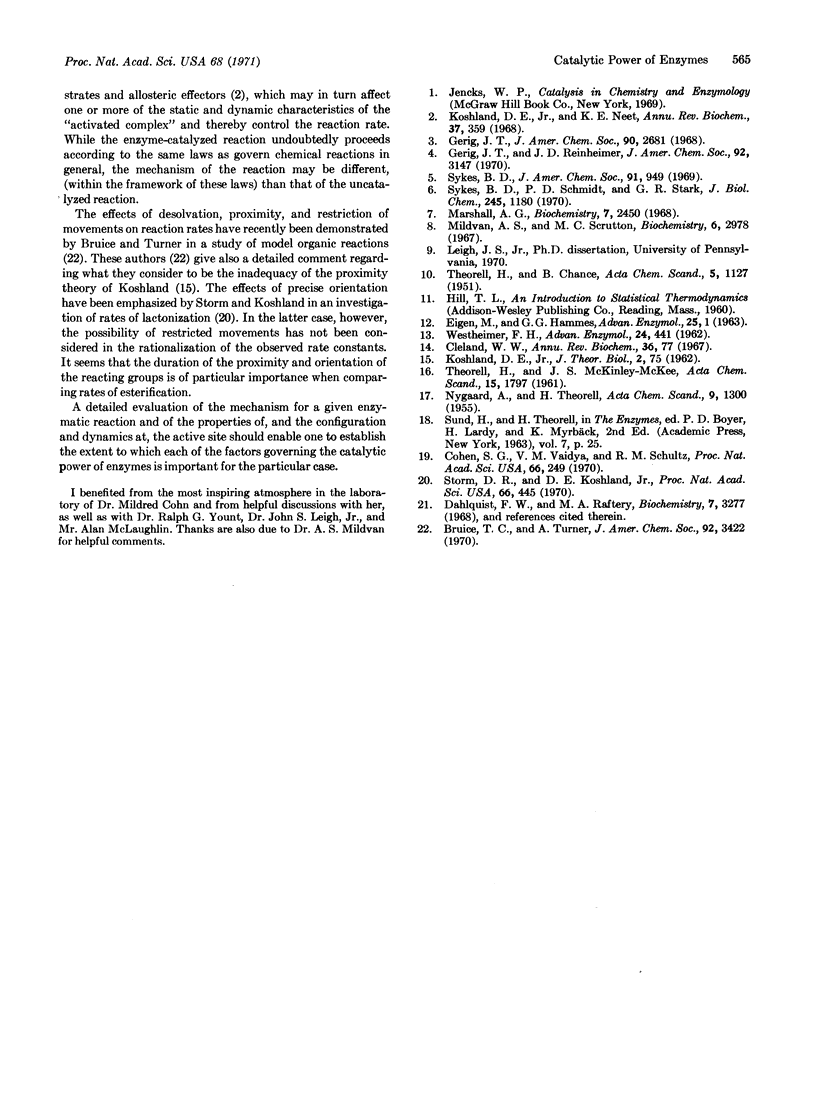Abstract
Evidence from published nuclear magnetic resonance studies of enzyme-substrate and enzyme-inhibitor systems systems shows that substrates are confined at the active site of the enzyme, have a relatively long residence time, and tumble in solution as an enzyme-substrate complex. The consequences of this “substrate anchoring” with regard to the catalytic power of enzymes are considered. It appears that as a result of the relatively slow motions, the probability of existence of the “activated complex” in the enzymatic reaction may be increased and thus the reaction rate may be accelerated by factors of between 106 and 109. It is estimated that the combined effect of substrate anchoring, desolvation, and charge compensation may lead to reaction-rate accelerations by factors of between 109 and 108.
Full text
PDF


Selected References
These references are in PubMed. This may not be the complete list of references from this article.
- Cohen S. G., Vaidya V. M., Schultz R. M. Active Site of alpha-Chymotrypsin Activation by Association-Desolvation. Proc Natl Acad Sci U S A. 1970 Jun;66(2):249–256. doi: 10.1073/pnas.66.2.249. [DOI] [PMC free article] [PubMed] [Google Scholar]
- Dahlquist F. W., Raftery M. A. A nuclear magnetic resonance study of enzyme-inhibitor association. The use of pH and temperature effects to probe the binding environments. Biochemistry. 1968 Sep;7(9):3277–3280. doi: 10.1021/bi00849a034. [DOI] [PubMed] [Google Scholar]
- EIGEN M., HAMMES G. G. ELEMENTARY STEPS IN ENZYME REACTIONS (AS STUDIED BY RELAXATION SPECTROMETRY). Adv Enzymol Relat Areas Mol Biol. 1963;25:1–38. doi: 10.1002/9780470122709.ch1. [DOI] [PubMed] [Google Scholar]
- Gerig J. T. Nuclear magnetic resonance studies of the interaction of tryptophan with alpha-chymotrypsin. J Am Chem Soc. 1968 May 8;90(10):2681–2686. doi: 10.1021/ja01012a038. [DOI] [PubMed] [Google Scholar]
- Koshland D. E., Jr, Neet K. E. The catalytic and regulatory properties of enzymes. Annu Rev Biochem. 1968;37:359–410. doi: 10.1146/annurev.bi.37.070168.002043. [DOI] [PubMed] [Google Scholar]
- Marshall A. G. Study of a sulfonyl derivative of alpha-chymotrypsin by chlorine nuclear magnetic resonance. Biochemistry. 1968 Jun;7(6):2450–2453. doi: 10.1021/bi00846a054. [DOI] [PubMed] [Google Scholar]
- Mildvan A. S., Scrutton M. C. Pyruvate carboxylase. X. The demonstration of direct coordination of pyruvate and alpha-ketobutyrate by the bound manganese and the formation of enzyme-metal-substrate bridge complexes. Biochemistry. 1967 Oct;6(10):2978–2994. doi: 10.1021/bi00862a003. [DOI] [PubMed] [Google Scholar]
- Storm D. R., Koshland D. E. A source for the special catalytic power of enzymes: orbital steering. Proc Natl Acad Sci U S A. 1970 Jun;66(2):445–452. doi: 10.1073/pnas.66.2.445. [DOI] [PMC free article] [PubMed] [Google Scholar]
- Sykes B. D. An application of transient nuclear magnetic resonance methods to the measurement of biological exchange rates. The interaction of trifluoroacetyl-D-phenylalanine with the chymotrypsins. J Am Chem Soc. 1969 Feb 12;91(4):949–955. doi: 10.1021/ja01032a027. [DOI] [PubMed] [Google Scholar]
- Sykes B. D., Schmidt P. G., Stark G. R. Aspartate transcarbamylase. A study by transient nuclear magnetic resonance of the binding of succinate to the native enzyme and its catalytic subunit. J Biol Chem. 1970 Mar 10;245(5):1180–1189. [PubMed] [Google Scholar]
- WESTHEIMER F. H. Mechanisms related to enzyme catalysis. Adv Enzymol Relat Subj Biochem. 1962;24:441–482. doi: 10.1002/9780470124888.ch9. [DOI] [PubMed] [Google Scholar]


